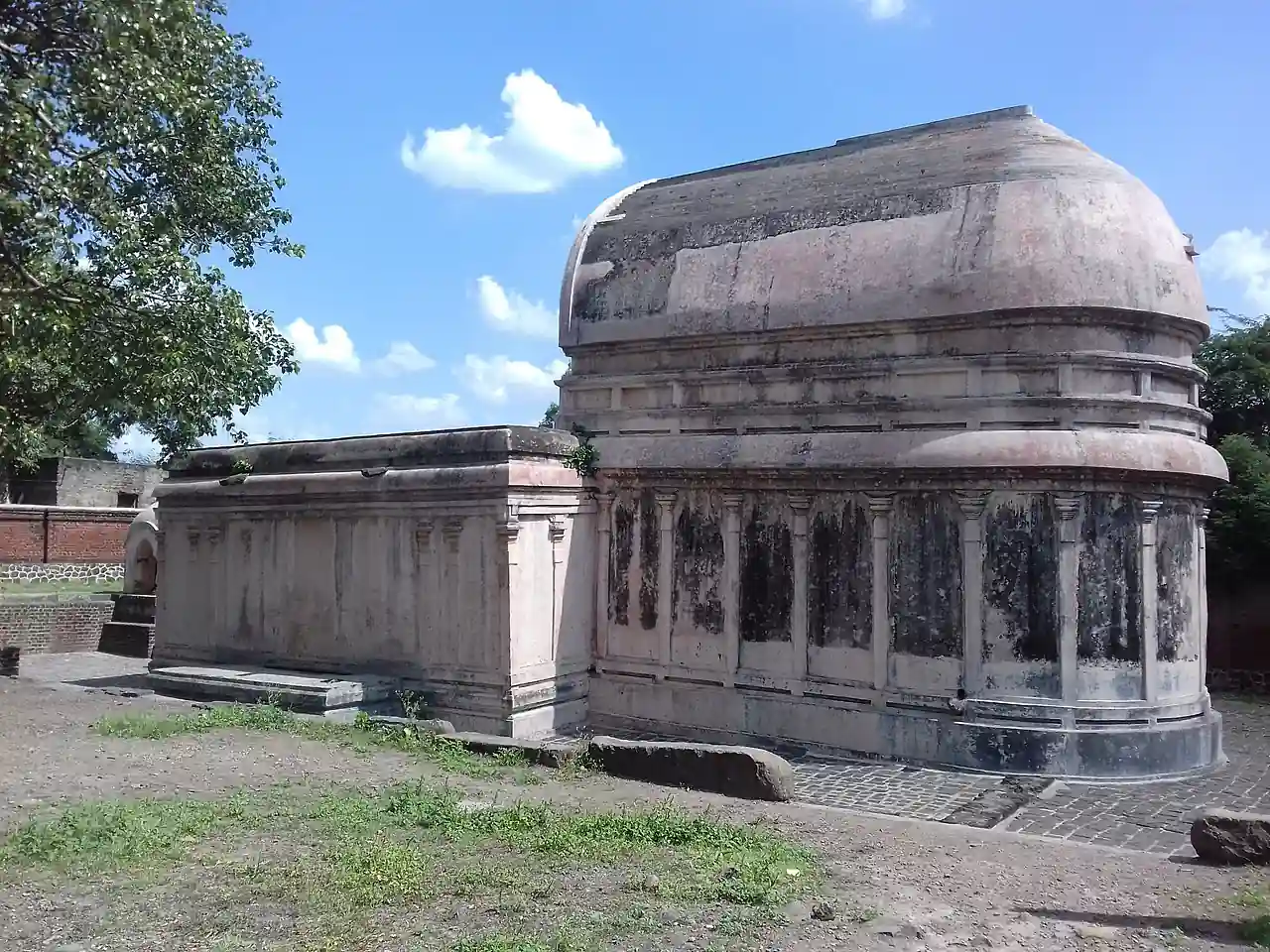Where Ancient Whispers Meet Fortress Echoes: Journey Through Time in Dharashiv!
🔴 Brief Introduction: Your Gateway to Dharashiv
Nestled in Maharashtra’s rugged Deccan plateau, Osmanabad — now officially Dharashiv — is far more than a district headquarters. It’s a living tapestry of empires, faiths, and architectural marvels waiting to captivate curious travellers. Imagine walking through 2,300-year-old Buddhist caves, standing atop medieval forts engineered by Bahmani geniuses, and feeling the devotion at temples that have drawn pilgrims for centuries. This city, renamed in 2023 to honour its ancient Dharashiv Caves, embodies Maharashtra’s soul beyond the well-trodden paths of Mumbai or Pune.
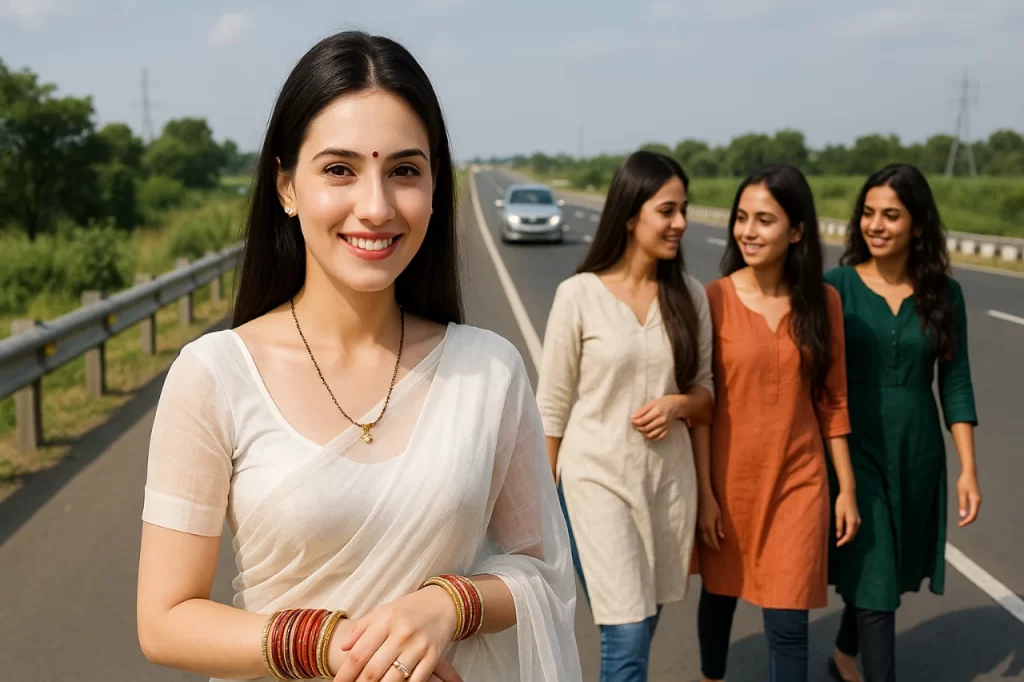
🕰️ Why Dharashiv Demands Your Attention:
➸ History Unearthed: Traces human habitation to the Stone Age, with Mauryan emperor Ashoka’s Buddhist influence still echoing in its rock-cut sanctuaries.
➸ Architectural Alchemy: A fusion of Hindu temple artistry (Chalukyan Kallinaatha Temple), Islamic military brilliance (Paranda Fort), and colonial railways.
➸ Spiritual Mosaic: From the thunderous chants at Tuljapur’s Bhavani Temple to the serene Jain Dharashiv Caves.
➸ Untamed Landscapes: Balaghat plateau’s River-cut Valleys, Monsoon-lashed Hills, and Tunnel-carved Railways.
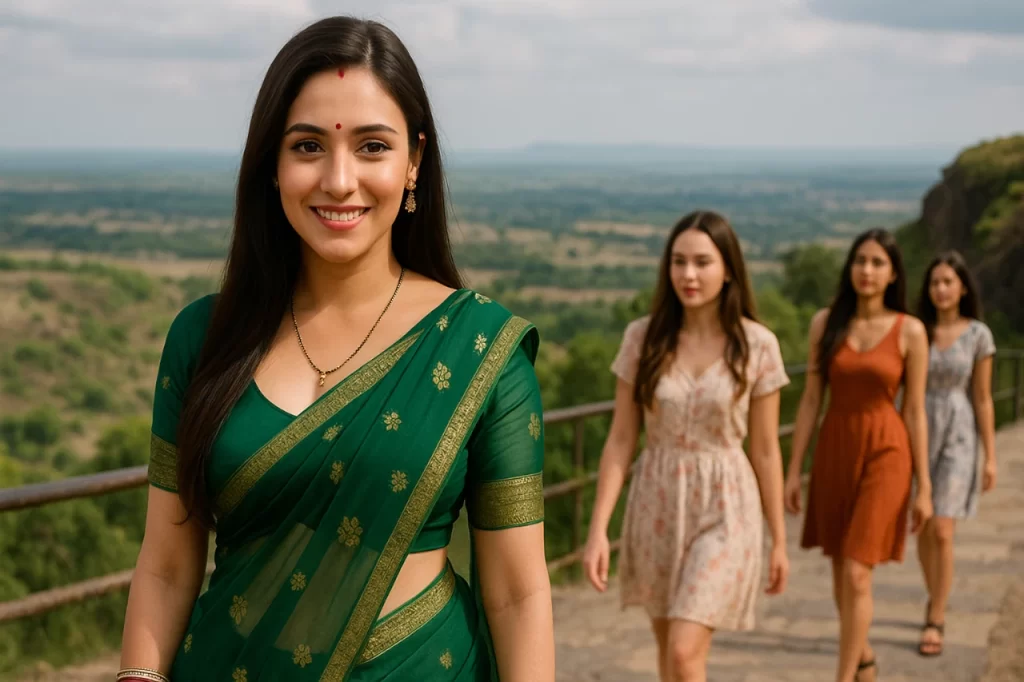
Unveiling Osmanabad (Dharashiv): Maharashtra’s Hidden Historical & Cultural Crossroads
🟢 Detailed Introduction: The Soul of Marathwada
Osmanabad (officially Dharashiv) is not merely a district headquarters in Maharashtra’s Marathwada region—it’s a living archive of 2,300 years of dynastic clashes, spiritual synthesis, and Deccan resilience. Perched at 653 meters on the Balaghat Plateau, this city (population: 111,825) blends ancient rock-cut caves, Bahmani military genius, and vibrant agrarian traditions into a tapestry unmatched in Western India.
Epochs Carved in Stone: From Ashoka to the Nizams
The region’s history unfolds like a Stratified Archaeological site:
➸ Mauryan Era (4th century BCE): Emperor Ashoka’s Buddhist missionaries established early Viharas (monasteries), precursors to the Dharashiv Caves.
➸ Satavahanas & Chalukyas (1st–8th century CE): Transformed Osmanabad into a trade corridor, building the Kallinaatha Shiva Temple using distinct Bhumija spires.
➸ Bahmani Sultanate (14th century): Military architect Mahmud Gawan engineered Paranda Fort—a 30-meter-high marvel with triple-layered walls and rainwater harvesting systems that sustained armies during sieges.
➸ Nizams of Hyderabad (1724–1948): The city derives its former name from the last Nizam, Mir Osman Ali Khan. Renamed Dharashiv in 2023, it now honours the 7th-century caves that symbolise its spiritual roots.
➨ Where Geography Shapes Destiny
The Bhogavati River cuts through the city, merging with the Sina River near Solapur, creating a lifeline for the region’s Sorghum, Pulses, and Cotton farms. Unlike arid Marathwada neighbours, Osmanabad’s plateau location moderates summer temperatures (avg. 39°C) and captures 829mm annual rainfall—triggering lush monsoon blooms.

🟣 In This Ultimate Guide, You’ll Discover:
🎯 The dramatic dynastic wars that shaped its identity (Satavahanas to Marathas).
🎯 Granular travel insights: Monsoons vs. Winters, Hyperlocal Cuisine, and Exact Transport times.
🎯 Deep dives into Caves, Forts & Temples — with exclusive tips from locals.
🎯 Free Downloadable Itinerary: 3-day cultural immersion plan!
Exploring Osmanabad’s Heritage and Culture
🟠 Detailed Section Breakdown
🔘 Part 1: The Soul of Dharashiv – History & Architecture
➤ Echoes from the Stone Age to Sultanates
Dharashiv’s soil holds secrets older than written history. Archaeological evidence confirms Stone Age settlements, but its documented saga begins with Emperor Ashoka’s Mauryan Empire (4th century BCE). Buddhism flourished here, with monks carving Viharas (Monasteries) into basalt cliffs — precursors to the famed Dharashiv Caves. As dynasties rose and fell, each left an indelible mark:
➸ Satavahanas (1st century CE): Turned the region into a trade hub.
➸ Chalukyas (6th century): Built the Kallinaatha Temple — a Shiva shrine showcasing early Bhumija-style Shikharas (Spires).
➸ Rashtrakutas (8th century): Commissioned Jain caves beside Buddhist sites, creating rare religious synergy.
➨ Local Insight: “Our grandparents spoke of ‘Yadavgarh’ — the Yadava dynasty’s 12th-century citadel ruins near Osmanabad. Farmers still find pottery shards after rains!” — Rajeshwar Mohite, Historian.
Also Read
Satara – Maharashtra’s Hidden Gem of History, Nature, and Culture
➤ Medieval Marvels: Forts that Defied Empires
The Bahmani Sultanate (14th century) transformed Osmanabad into a military masterpiece. Paranda Fort, engineered by prime minister Mahmud Gawan, showcases:
➸ Triple-layered 30-meter-high walls with geometric bastions.
➸ A rainwater harvesting system so advanced, it sustained armies during decade-long sieges.
➸ Hidden tunnels linking to Tuljapur (still partially unexplored!).
When the Mughals pushed south, the Nizamshahis made Osmanabad their capital, adding Yermala’s Yedeshwari Temple — a Hemadpanti gem with Dipmals (Lamp Towers) and lotus-carved pillars.
➨ Table: Dharashiv’s Dynastic Legacy Timeline
| Era | Rulers | Key Contributions |
| 4th – 2nd BCE | Mauryas | Buddhist caves, trade routes |
| 6th – 8th CE | Chalukyas | Kallinaatha Temple, Irrigation Tanks |
| 14th C. | Bahmani Sultanate | Paranda Fort, Islamic Scholarship Hubs |
| 18th C. | Marathas | Road Networks, Market Towns (e.g., Tuljapur) |

🔘 Part 2: Journeying Through Dharashiv – Travel Essentials
➤ Conquering Distance: How to Reach (Brief Description)
🏁 Dharashiv is surprisingly accessible:
➨ Table: Distance & Transit from Major Cities
| City | Distance (km) | By Road | By Rail |
| Mumbai | 425 km | 8-9 hrs (NH52) | Direct trains (Mumbai-Osmanabad Express) |
| Hyderabad | 329 km | 6-7 hrs (NH65) | Direct Latur-Hyderabad trains |
| Pune | 260 km | 5-6 hrs (NH65) | Via Kurduvadi Junction |
| Aurangabad | 250 km | 4-5 hrs (NH52) | Connecting Trains |
💡 Pro Tip: The scenic Latur – Osmanabad Railway passes through a 1.5 km tunnel — Engineering magic! Book window seats for cliff views.
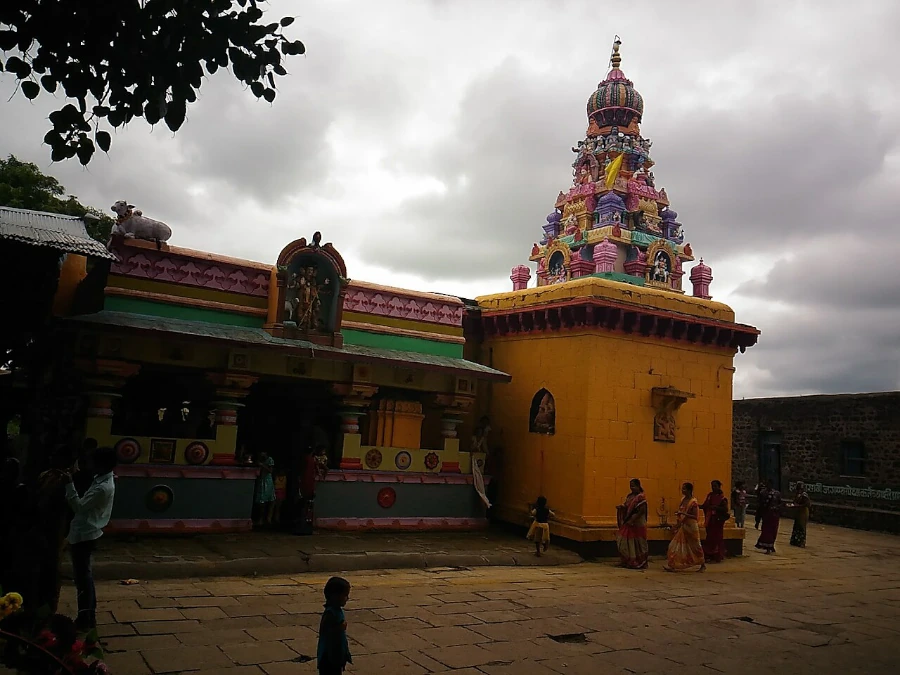
🌄 Climate Decoded: When to Visit
☁️ October – February (15°C – 28°C): Ideal for forts/caves. Winter festivals like Kartik Ekadashi light up temples.
🌧️ June – September (Monsoon): Lush landscapes, but cave access risky. Locals celebrate “Pola” with bullock parades!
☀️ March–May (Up to 40°C): Harsh; retreat to cool Hatladevi Hill Station.
🔘 Part 3: Beyond the Beaten Path – Attractions Deep Dive
➤ Dharashiv Caves: Whispers in Stone
🛣️ Why Visit: Seven rock-cut caves blending Buddhist, Jain, and Hindu artistry (5th–10th century CE).
➸ Cave 2: A 6th-century Buddhist Chaitya with a serpent-hooded Buddha statue. Debate rages: Is it Buddha or Jain Parshwanath? Note the deer-flanked Dharmachakra.
➸ Cave 5: Jain Tirthankara carvings added by Rashtrakuta king Karakanda.
🕰️ Best Time: 8 – 11 AM (Soft light for Photography).
➨ Local Secret: Hire guide Raju P. (Near Ticket Booth) to decode hidden inscriptions.
➤ Forts That Tell Tales
➸ Paranda Fort (ASI Protected): Climb its Burj (Towers) at sunset for panoramas. Spot cannonball scars on the Darwaza.
➸ Naldurg Fort: 45 km away. A water fort with moats — Bahmani hydrology genius!
➤ Spiritual Sanctuaries
➸ Tuljapur Bhavani Temple: 20 km away. Maharashtra’s most visited Shakti Peeth. Arrive by 5 AM for Kakad Aarti.
➸ Ruibhar Datta Mandir: 12 km away. Meditate under ancient banyan trees where Kirtans echo nightly.
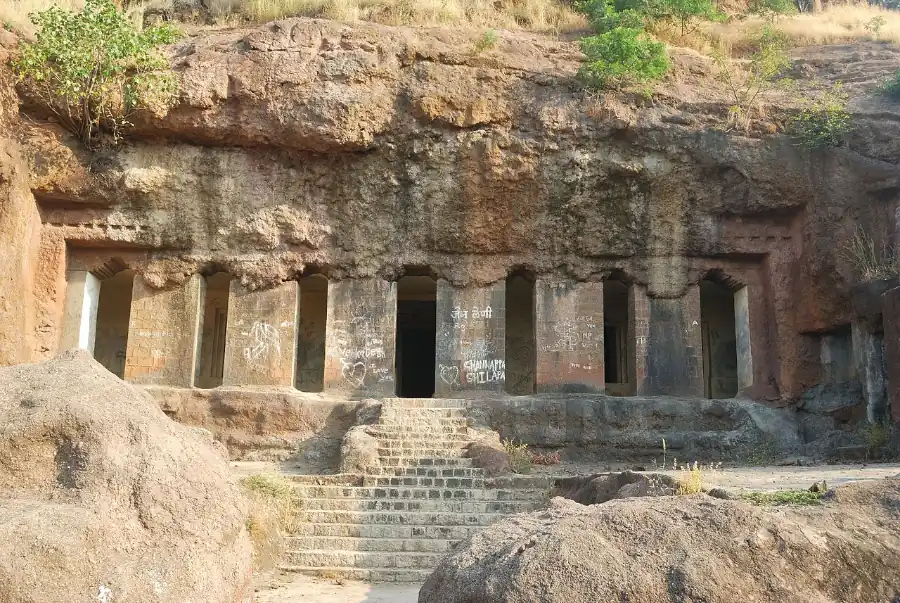
🔘 Part 4: Living Dharashiv – Culture, Food & Crafts
➨ A Culinary Pilgrimage
⦿ Savji Delights: Try Tambda Rassa (Spicy Mutton Curry) at Shivsagar near Bus Stand.
⦿ Sweet Obsession: Puran Poli (Lentil-stuffed Flatbread) at Tuljapur temple stalls.
➨ Handicrafts with Heart
⦿ Bidriware: Silver-inlaid metalwork from nearby Bidar. Buy at Osmanabad Haat (Sunday Market).
⦿ Himroo Shawls: Mughal-inspired weaves — light yet warm.
➨ Interview Snippet: “We use tamarind dye for rust-red patterns — passed down 5 generations”. — Fatima Khan, Weaver
🚉 Comprehensive Guide: How to Reach Osmanabad (Dharashiv) & Distances from Major Indian Cities – with Granular Details
Osmanabad (officially Dharashiv) is a historically rich district headquarters in Maharashtra’s Marathwada region. Renamed in 2023 to honour its ancient Dharashiv Caves, the city blends Chalukyan temples, Bahmani forts, and Deccan plateau landscapes. Despite its cultural significance, its transport network remains modest. Below is a granular analysis of how to reach Osmanabad from major Indian cities, covering all modes, distances, durations, costs, and strategic tips.
🌏 1. Geographic Context & Transport Landscape
Osmanabad sits on the Balaghat Plateau at 653m elevation, moderating its climate compared to neighbouring arid zones. Key transport constraints include:
➸ No direct flights: Nearest airports are Pune (261 km) and Latur (73 km).
➸ Limited Rail routes: Though connected via the Latur – Miraj Broad-gauge line, train frequency is moderate.
➸ Road Dependence: National/state highways like NH 52 and SH 67 form the primary access network.
The Bhogavati River bisects the city, merging with the Sina River near Solapur—critical for agriculture but prone to monsoon flooding.
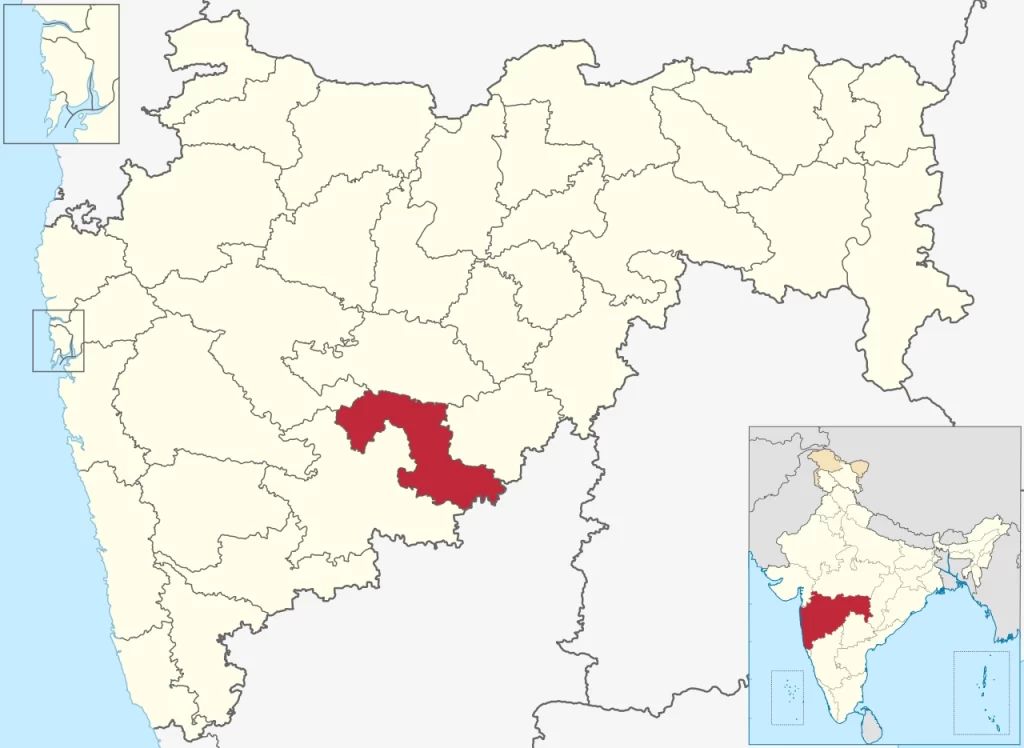
✈️ 2. Air Connectivity: Nearest Airports
➨ Pune International Airport (261 km)
⦿ Flight Options: Direct connections from Delhi (1,440 km, 2h 15m), Mumbai (347 km air distance), Bengaluru, and Hyderabad.
✦ Ground Transfer:
⦿ Taxi: ₹3,500 – ₹4,500 (4.5 hours via NH 65)
⦿ Bus: MSRTC / Private Buses (₹400 – ₹800; 6 hours)
➨ Latur Airport (73 km)
⦿ Status: Limited regional flights; primarily serves as a backup.
⦿ Transfer: Taxis (₹1,200; 1.5 hours) or buses (₹100; 2 hours).
➨ Mumbai’s Chhatrapati Shivaji Airport (347 km air; 409 km road)
⦿ Flight Duration: 1h 10m (Mumbai → Pune), then 4.5-hour road journey.
Note: Distance is approximate and travel time may vary. Please check with google maps or local authorities before travelling.

🚂 3. Rail Connectivity: Key Routes & Stations
Osmanabad’s Dharashiv Railway Station (UMD) lies on the Latur – Miraj route (Central Railway).
➨ Critical trains:
⦿ Mumbai – Osmanabad Express: Via Pune and Kurduvadi (8–10 hours; sleeper ₹220, AC ₹950).
⦿ Hyderabad – Osmanabad: Connecting trains via Secunderabad (6 hours; ₹180 – ₹700).
⦿ Pune–Osmanabad: Daily passenger trains (5 hours; ₹150).
💡Pro Tip: The 1.5-km tunnel near Osmanabad offers dramatic cliff views—book window seats!
🛣️ 4. Road Networks: Highways & Bus Services
➨ National/State Highways
⦿ NH 52: Connects Sangrur (Punjab) to Ankola (Karnataka) via Osmanabad.
⦿ NH 65: Links Pune to Hyderabad; Osmanabad bypass reduces city traffic.
⦿ SH 67: Intra-Maharashtra access to Solapur (67 km) and Latur (73 km).
➨ Bus Services
⦿ State Transport: MSRTC buses from Mumbai (₹500 – ₹800; 8 hours), Pune (₹300 – ₹600; 5 hours), Hyderabad (₹400 – ₹700; 6 hours).
➨ Private Operators:
⦿ Paani Travels: Mumbai → Osmanabad AC sleeper (₹900; 7h 48m).
⦿ Shivneri Travels: Pune → Osmanabad semi-luxury (₹450; 4.5 hours).
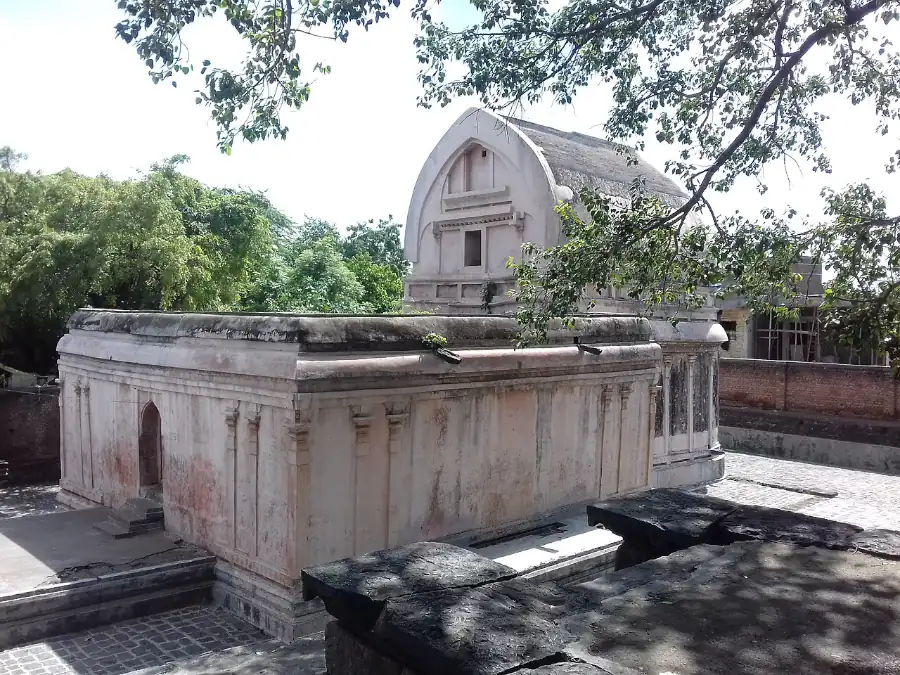
📍 5. City-Wise Distance & Transit Details
➨ Mumbai to Osmanabad
⦿ Air: 347 km (1h 10m flight to Pune) + 261 km road (4.5h). Total: ~6 hours; ₹6,000 – ₹9,000.
⦿ Rail: Mumbai CSMT → Osmanabad Express (10 hours; ₹220 – ₹950).
⦿ Road: 409 km via NH 65/NH 52 (7h 48m; ₹500 – ₹900 by bus).
➨ Hyderabad to Osmanabad
⦿ Road: 326 km via NH 65 (5.5 hours; ₹400 – ₹700 by bus).
⦿ Rail: Secunderabad → Osmanabad Passenger (6 hours; ₹180).
➨ Pune to Osmanabad
⦿ Road: 260 km via NH 65 (4.5 hours; ₹300 – ₹600 by bus).
⦿ Rail: Pune → Osmanabad DEMU (5 hours; ₹150).
➨ Delhi to Osmanabad
⦿ Air: Delhi → Pune (2h 15m; ₹4,000 – ₹7,000) + Taxi/Bus (4.5h; ₹3,500).
⦿ Rail: Delhi → Pune Duronto (18h) → connecting train to Osmanabad (5h).
✅︎ Table: Summary of Travel Options from Key Cities
| City | Distance (Road) | Fastest Route | Duration | Cost (Approx) |
| Mumbai | 425 km | Flight to Pune + Road/Train | 6–7 hours | ₹6,000 – ₹9,000 |
| Hyderabad | 329 km | Direct Bus | 5.5 hours | ₹400 – ₹700 |
| Pune | 260 km | Direct Bus/Train | 4.5–5 hours | ₹300 – ₹600 |
| Aurangabad | 250 km | Bus/Taxi | 4 hours | ₹350 – ₹650 |
| Solapur | 67 km | Bus/Taxi | 1.5 hours | ₹100 – ₹300 |
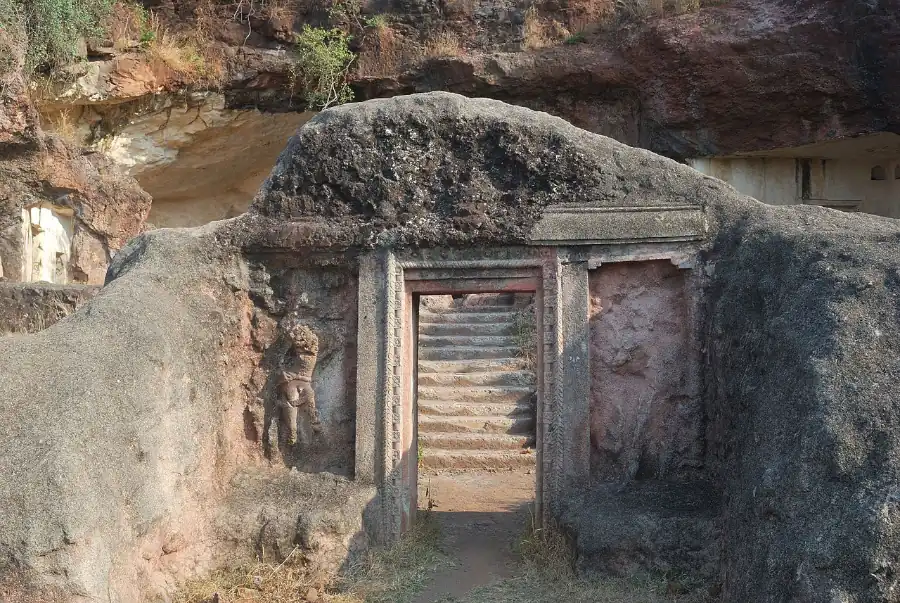
🚗 6. Inter-District Connectivity
⦿ Solapur (67 km): Frequent buses/taxis (1.5 hours; ₹100).
⦿ Latur (73 km): Shared taxis (₹150; 1.5 hours) or Trains (1 hour; ₹50).
⦿ Tuljapur (20 km): Auto-rickshaws (₹200) for Tulja Bhavani Temple visits.
🌦️ 7. Seasonal Travel Considerations
☁️ Winter (November – February): Best for travel (15°C – 28°C). Ideal for forts/caves.
🌧️ Monsoon (June – September): 829mm rainfall; road delays likely. Avoid cave visits.
☀️ Summer (March – May): Up to 45°C. Travel early morning.

💡 8. Strategic Travel Tips
➸ Booking Resources:
⦿ Trains: Use IRCTC app; book Mumbai-Osmanabad Express 120 days ahead.
⦿ Buses: redBus offers ₹300 discounts (code: “BUS300”).
➸ Last-Mile Connectivity: Auto-rickshaws (₹15/km) or cycle-rickshaws (₹10/km).
➸ Cargo/Freight: Weeple Logistics for parcel transport (₹150 – ₹500 per kg).
🎯 Key Takeaway: Osmanabad’s Road Network is its lifeline. For speed, combine flights to Pune with road transfers. Budget travellers can rely on MSRTC buses. Always confirm monsoons routes via @MSRTC_Alert (Twitter).
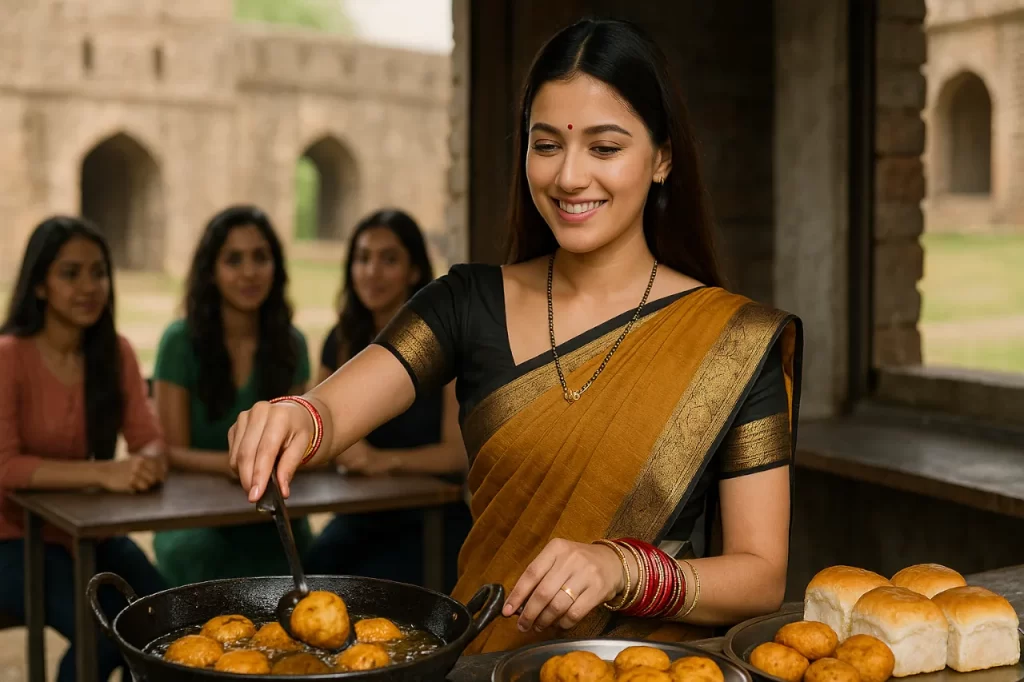
🍽️ Best Places for Refreshments with Authentic Local Food
🍛 Temple Stalls at Tuljapur Bhavani
⦿ Specialty: Puran Poli (Lentil-stuffed Sweet Flatbread) Dipped in Tup (Ghee)
⦿ Where: Bhakt Niwas annex, 50m from temple sanctum
⦿ Insider Tip: Arrive by 6 AM for Kakad Aarti rituals followed by steaming Puran Poli (₹20/piece)
🍛 Savji Meat Hubs Near Osmanabad Bus Stand
⦿ Star Dish: Tambda Rassa (Fiery Red Mutton Curry) + Shenga Chutney (Peanut-based Paste)
➸ Top Picks:
⦿ Shivsagar Restaurant: Mutton Thali (₹280) with farm-fresh Jowra roti
⦿ Hotel Sai Leela: Sunday buffet featuring 15 Savji delicacies (₹299)
🍛 Street Food at Khwaja Nagar Dargah Road
⦿ Must-Try: Nihari (Slow-cooked Mutton stew) during Urs festival
⦿ Hidden Gem: Rahiman’s Kiosk—50-year-old recipe with ₹150/plate

🏰 Best Places to Visit in Osmanabad (Dharashiv): Granular Travel Guide
🔘 Dharashiv Caves: Ancient Rock-Cut Marvels
🏁 Distance from Osmanabad: 8 km
➤ Historical Significance: Carved between the 6th–8th centuries CE, these seven caves transitioned from Buddhist Viharas to Jain shrines under Rashtrakuta patronage. Cave 2 features a serpent-hooded Buddha/Jain Parshwanath statue (debated by scholars) flanked by deer and a Dharmachakra symbol.
➨ Visitor Experience:
➸ Guided Tours: Local historian Raju P. (₹200/hr) decodes inscriptions and explains the Buddhist-to-Jain transition.
➸ Photography: Best during 8–11 AM for soft light on basalt carvings.
➸ Accessibility: Steep climb; avoid monsoons (July–September) due to slippery paths.
🔘 Tulja Bhavani Temple: Maharashtra’s Spiritual Powerhouse
🏁 Distance from Osmanabad: 20 km
➤ Unique Features: One of India’s 3.5 Shakti Peethas, the black-stone Temple enshrines Goddess Bhavani – Chhatrapati Shivaji’s Kuladevata (Family Deity). The gold-plated Shikhara and Maratha-era courtyard host 5,000+ daily devotees.
➨ Rituals & Timing:
⦿ Kakad Aarti: Pre-dawn 4:30 AM ritual with conch shells and drums.
⦿ Mukhagni Offerings: Fire ceremonies believed to carry prayers directly to the goddess.
⦿ Festivals: Navratri (October/November) sees 1 lakh+ Pilgrims; book Darshan tickets online.

🔘 Paranda Fort: Engineering Masterpiece of the Bahmanis
🏁 Distance from Osmanabad: 45 km
➤ Architectural Highlights: Built by Mahmud Gawan (Bahmani prime minister), this ASI-protected fort features:
⦿ Triple-Layered Walls: 30-meter-high ramparts with geometric bastions to deflect cannonballs.
⦿ Rainwater Harvesting: 12 interconnected reservoirs that sustained year-round water supply.
⦿ Secret Tunnels: 8 km network linking to Tuljapur (partially explorable).
➸ Sunset Tip: Climb Burj-e-Qila tower for panoramic views of the Sina River.
🔘 Naldurg Fort: Hydraulic Wonder of the Deccan
🏁 Distance from Osmanabad: 50 km southeast
➨ Military Innovation:
⦿ Water Moat System: 40-meter-wide channel fed by the Bori River, used for defence and irrigation.
⦿ Cannon Forge: On-site foundry producing 16th-century artillery still visible near Darwaza gates.
➨ Hidden Gem: The Teen Darwaza (Three Gates) complex features acoustic arches that amplify whispers.
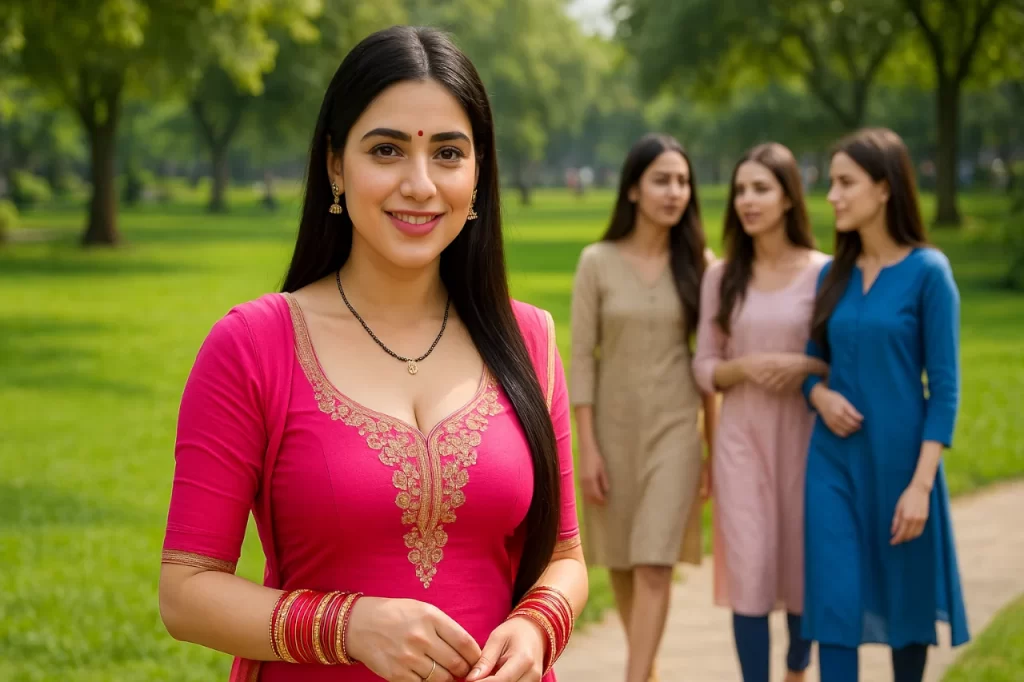
🔘 Ter (Tagar): Archaeological Treasure Trove
🏁 Distance from Osmanabad: 22 km
➨ Key Sites:
➸ Ramalinga Appa Lamture Museum: Houses Mauryan-era coins, Satavahana sculptures, and a 2nd-century BCE Buddha torso.
➸ Sant Gora Kumbhar Samadhi: 12th-century poet-saint’s memorial with daily Abhang (Devotional song) sessions at 6 PM.
➸ Excavation Insight: ASI teams (2020–2023) uncovered a brick-and-laterite marketplace proving Ter’s role in ancient Deccan trade routes.
🔘 Sri Yedeshwari Temple: Hemadpanti Architectural Gem
🏁 Location: Yermala village (35 km from Osmanabad)
➨ Design Elements:
⦿ Dipmals: Three lamp towers (central one 15 ft tall) used for Deepavali illuminations.
⦿ Pillared Mandapa: 24 carved pillars depicting scenes from the Devi Mahatmya.
⦿ Ritual: Every July, the Rath Yatra procession draws 50+ bullock carts bearing deity ornaments.

🔘 Siddha Kshetra Kunthalgiri: Jain Pilgrimage Oasis
🏁 Distance from Osmanabad: 65 km
➨ Complex Layout:
⦿ Main Temple: White-marble Adinatha idol with Ashtadhatu (8-metal) crown.
⦿ Meditation Caves: 40 rock-cut cells where ascetics practiced Sallekhana (Ritual Fasting).
➨ Annual Event: Paryushan Parva (August/September) features 500+ monks conducting Samvatsari (Forgiveness Rituals).
🔘 Yedshi Ramalinga Wildlife Sanctuary: Biodiversity Hotspot
🏁 Distance from Osmanabad: 30 km
➨ Wildlife & Activities:
⦿ Fauna: Indian Bison (Gaur), Leopards, 150+ bird species including the Deccan lark.
⦿ Safari Options: Dawn jeep tours (₹600/person) or trekking trails to Pandhri Point.
➨ Conservation Note: Tribal guides like Motiram K. share knowledge of medicinal plants used by Gond communities.
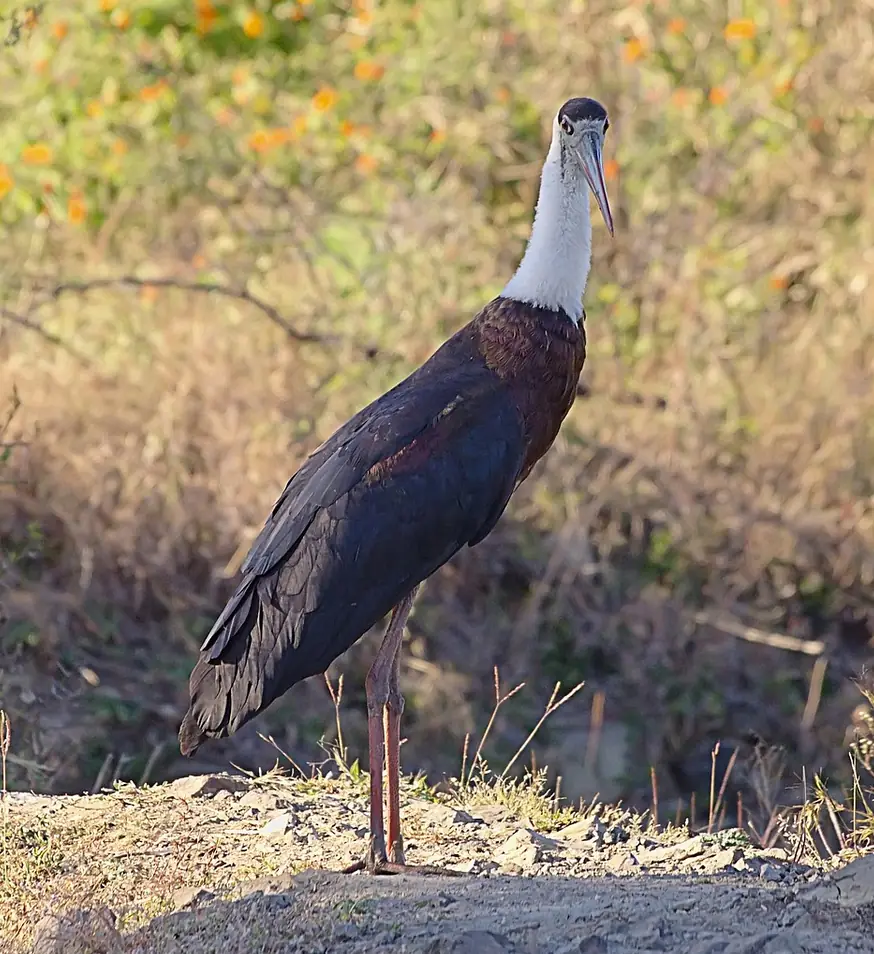
🔘 Mankeshwar Temple: Lord Shiva’s Abode in Stone
🏁 Location: Osmanabad City Center
➨ Sacred Features:
⦿ Nandi Sculpture: 7-ft monolithic bull facing the Sanctum, Anointed daily with Turmeric.
⦿ Underground Stream: Below the Lingam – devotees believe its water cures ailments.
➨ Festival: Mahashivratri all-night Jaagran (Vigil) with Vedic chants.
🗺️ Practical Travel Planner
| Site | Best Time to Visit | Entry Fee | Guided Tour |
| Dharashiv Caves | October – February (7 AM – 5 PM) | ₹ 50 | Local guides ₹ 200/hr |
| Paranda Fort | November – March (9 AM – 6 PM) | Free | ASI Pamphlets Available |
| Yedshi Sanctuary | July – September (6 AM – 10 AM) | ₹ 100 | Tribal safaris ₹ 600 |
➨ Pro Tips:
➸ Combined Route: Osmanabad → Dharashiv Caves (AM) → Tuljapur (Lunch + Temple) → Paranda Fort (Sunset).
➸ Local Transport: Auto-rickshaws charge ₹15/km; pre-book full-day taxis (₹1,500) via Hotel Sai Leela.
➸ Culinary Stop: At Tuljapur, try Puran Poli at Bhakt Niwas canteen (₹20/piece).
💡 “Osmanabad’s forts teach stone can breathe; its caves prove silence speaks. Carry water, curiosity, and leather shoes for history’s rugged embrace”. – Local Guide Kishore R., Osmanabad Heritage Walks.

🏨 Where to Stay: Luxury, Budget & Pilgrim Havens
🏛️ Luxury Hotels
| Property | Rates (Per Night) | Check-in Timings | Key Facilities |
| Hotel Sai Leela | ₹ 2,100 | 12 PM | Pool, kids’ zone, Savji cuisine |
| Hotel Pushpak Park | ₹ 3,200 | 1 PM | Ayurvedic Spa, Rooftop Dining |
🏛️ Budget Stays
| Property | Rates (Per Night) | Check-in Timings | Key Facilities |
| Hotel Yuvraj | ₹ 900 | 12 PM | Veg Thali (₹80), Auto Rental |
| Pratibha Executive | ₹ 1,100 | 12 PM | Free Wi-Fi, Bus Stand Shuttle |
🏛️ Dharamshalas & Pilgrim Lodges
⦿ Bhavani Chatra Yatri Niwas (Tuljapur): ₹300/night; pure veg meals (₹50); 3-min walk to temple.
⦿ Ambai Bhakt Niwas (Osmanabad): Donation-based; shared dorms; kitchen access.
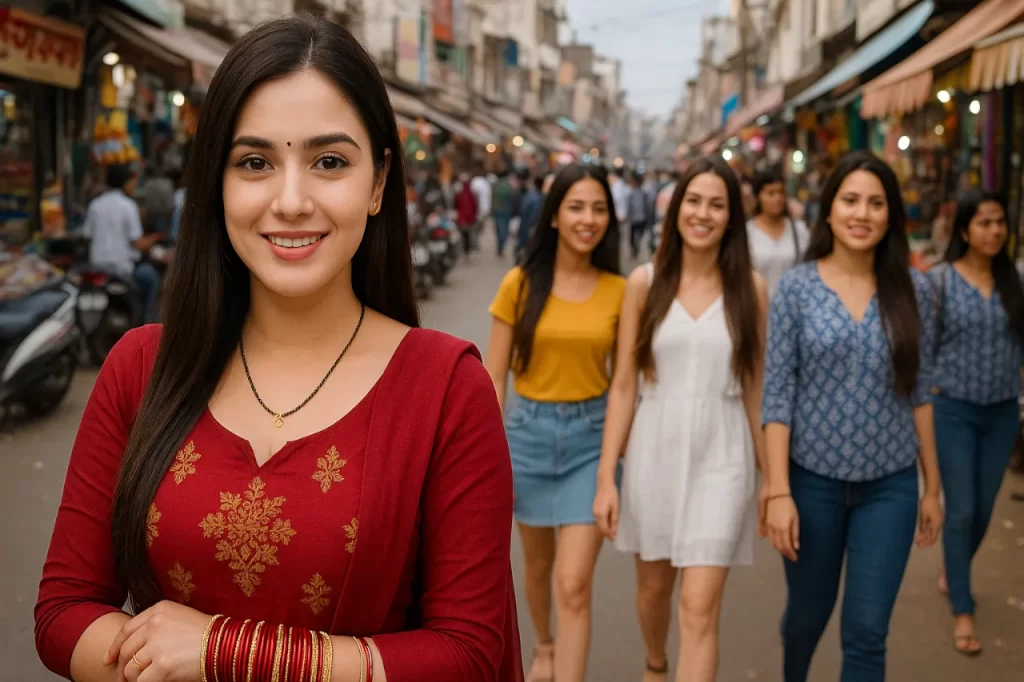
👑 Notable Personalities of Osmanabad
| Name | Contribution | Roots |
| Sant Gora Kumbhar | 12th-century Poet-saint; Pioneered Bhakti Movement | Ter Village |
| Omprakash Nimbalkar | Current MP; Agricultural reform Advocate | Osmanabad city |
| Dr. Shankarrao Gadakh | Ex-Guardian Minister; Education Activist | Kalamb Taluka |
📊 Detailed Demographics (2011 Census)
⦿ Population: 1,657,576 (District); 111,825 (City)
⦿ Religions: Hindus (61%), Muslims (24%), Buddhists (10.6%), Jains (3.7%)
⦿ Languages: Marathi (85.42%), Hindi (5.89%), Urdu (4.25%)
⦿ Literacy: 76.33% (District); 74% (City)
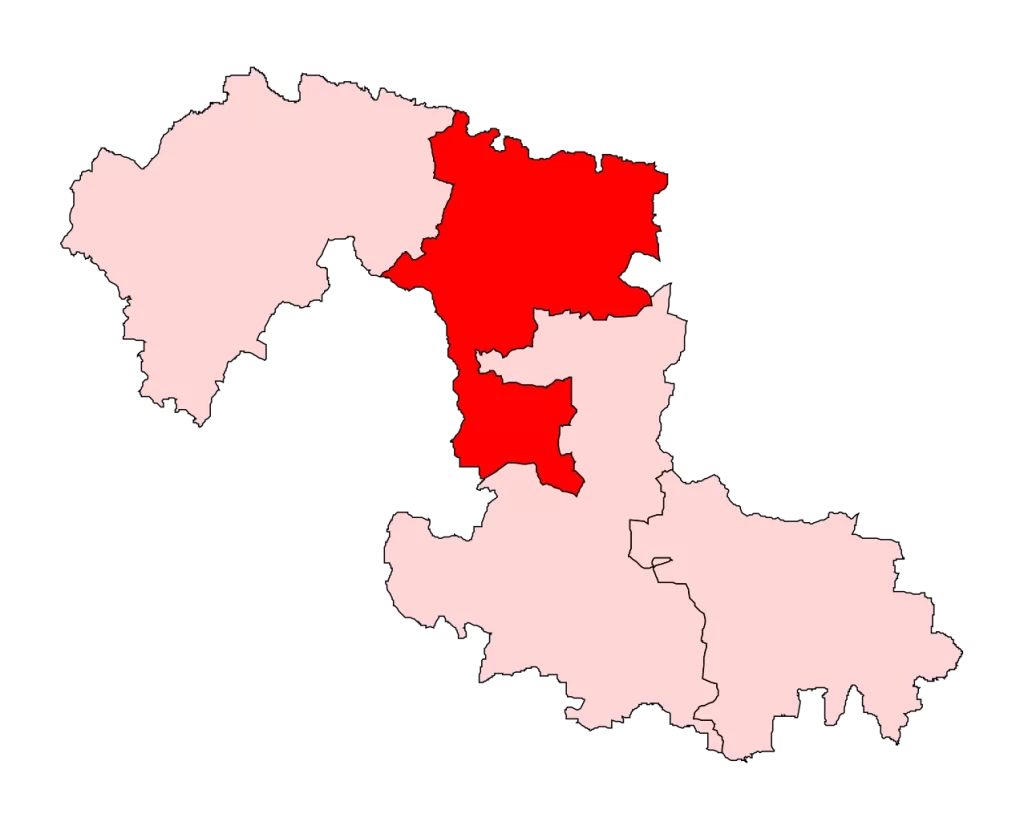
🌄 Climatic Conditions: Season-by-Season
☀️ Summer (March–June)
⦿ Temperature Range: 30°C – 45°C
⦿ Characteristics: Dry heat moderated by elevation; lowest in Marathwada
⦿ Travel Tip: Visit Hatladevi Hills (2,200 ft) for cool breezes
🌧️ Monsoon (July–September)
⦿ Rainfall: 829mm avg; peaking in August (182mm)
⦿ Festivals: Pola (Bullock Parade celebrating farm animals)
⦿ Caution: Cave sites may close during heavy downpours
☁️ Winter (November–February)
⦿ Temperature Range: 8°C – 28°C
⦿ Highlights: Foggy mornings at Yermala’s Yedeshwari Temple; winter harvest festivals
🏘️ Talukas of Osmanabad District
Osmanabad comprises 8 administrative talukas:
➸ Osmanabad City: Commercial hub + Dharashiv Caves
➸ Tuljapur: Spiritual center (Bhavani Temple)
➸ Paranda: Historical fort complex
➸ Omerga: Agricultural market town
➸ Kalamb: Yedeshwari Temple + Manjara River
➸ Bhoom: Cotton processing zone
➸ Washi: Educational institutions
➸ Lohara: Tribal craft villages

🏭 Industrial Development & Key Industries
➨ Economic Backbone
⦿ Agriculture: Sorghum (58% farmland), cotton (22%), oilseeds
⦿ Processing Units: 12 cotton ginning factories near Bhoom; 3 soy oil mills
⦿ MIDC Initiatives: Reliance Airport Developers’ 95-year lease for cargo hub development
➨ Emerging Sectors
⦿ Renewable Energy: 200MW solar park in Tuljapur taluka
⦿ Education: TISS Tuljapur campus driving rural innovation
⏳ Historical Timeline: Dynasties That Shaped Dharashiv
| Period | Rulers | Legacy |
| 300 BCE – 200 CE | Mauryas | Buddhist Cave Foundations |
| 600 – 750 CE | Chalukyas | Kallinaatha Temple |
| 1347 – 1527 | Bahmanis | Paranda Fort Engineering |
| 1724 – 1948 | Nizams of Hyderabad | Revenue system + Osmanabad Naming |
| 1960 – Present | Maharashtra | Renaming to Dharashiv (2023) |
💬 Local Voices: Cultural Insights
➸ Weaver Fatima Khan, Osmanabad Haat – “Our Bidriware uses soil from Dharashiv Caves for blackening—a secret from my great-grandfather’s time. Tourists love the elephant motifs!”
➸ Farmer Prakash Jadhav, Village Dhoki – “Monsoons? We pray to Yedeshwari Devi. When rains hit the Balaghat slopes, our Jowar crop turns to gold”.
🗺️ 3-Day Immersion Itinerary
➸ Day 1: Heritage Core
⦿ AM: Dharashiv Caves (Guided Tour)
⦿ PM: Paranda Fort + Yermala’s Hemadpanti temple
➸ Day 2: Spiritual Circuit
⦿ 4 AM: Tuljapur Bhavani Kakad Aarti
⦿ Noon: Ter (Sant Gora Kumbhar’s Birthplace)
⦿ Eve: Sufi qawwali at Khwaja Nagar Dargah
➸ Day 3: Rural Insights
⦿ Cotton farm visit (Bhoom taluka)
⦿ Bidriware workshop (Osmanabad Haat)
➤ Conclusion:
➨ Why Dharashiv Stays With You
Dharashiv isn’t just a destination; it’s a dialogue with time. From the Buddhist Monk’s chisel shaping caves to Maratha soldiers guarding Paranda, every stone pulses with stories. As traveler Ananya Mehta reflects: “I came for forts, but left with my soul in ruins — beautifully shattered”.
➨ Ready to Write Your Story?
📅 Grab Your 3-Day Itinerary: [Please refer detailed section above]
💬 Ask a Local: Join our Dharashiv Insider Facebook Group for more detailed information
➤ FAQs:
➨ Dharashiv Uncovered
Why was Osmanabad renamed Dharashiv?
To honour its ancient Dharashiv Caves — spiritual epicentre since 500 BCE.
Can I visit during monsoons?
Yes! But caves may close if waterlogged. Focus on misty hill stations like Hatladevi.
How do I reach the caves from Osmanabad city?
Auto-rickshaws (₹150) or local buses from Shivaji Chowk (6 km).
➤ Sources:
⦿ Wikipedia – Osmanabad (officially known as Dharashiv)
⦿ Archaeological Survey of India (ASI) Records
⦿ Maharashtra District Gazetteers: Osmanabad
⦿ Local Oral Histories & Interviews
⦿ Census Data 2011
⦿ Local Oral Histories
Image Credit
⦿ Wikimedia Commons – Indien2012 1221 Osmanabad Darashiva Leni
⦿ Wikimedia Commons – Indien2012 1227 Osmanabad Darashiva Leni
⦿ Wikimedia Commons – Osmanabad in Maharashtra (India)
⦿ Wikimedia Commons – Indien2012 1229 Osmanabad Darashiva Leni
⦿ Wikimedia Commons – Indien2012 1224 Osmanabad Darashiva Leni
⦿ Wikimedia Commons – Khandoba Mandir Andur Osmanabad Maharashtra India
⦿ Wikimedia Commons – Inner reservoir with fortifications, Naldurg fort
⦿ Wikimedia Commons – Ciconia episcopus -Osmanabad district, Maharashtra, India-8
⦿ Wikimedia Commons – Trivikram Temple Ter Osmanabad
⦿ Wikimedia Commons – 242-Osmanabad.svg
For more information, you can visit our website: ExploreXP
Latest Posts
- Explore Gadchiroli, Maharashtra: History, Architecture, Culture, Itineraries and Nature

- Exploring Mughalsarai: History, Culture, and Travel
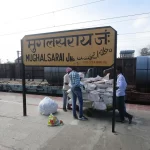
- Explore Katni, Madhya Pradesh: History, Culture, and Nature

- Ludhiana, Punjab, India – The Industrial Heartbeat with Timeless Heritage

- Unveiling Osmanabad (Dharashiv): Maharashtra’s Hidden Gem of History, Caves & Culture
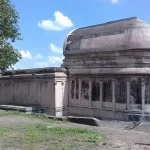
- Explore Sawantwadi: Maharashtra’s Hidden Gem of Heritage, Art, and Natural Splendour

